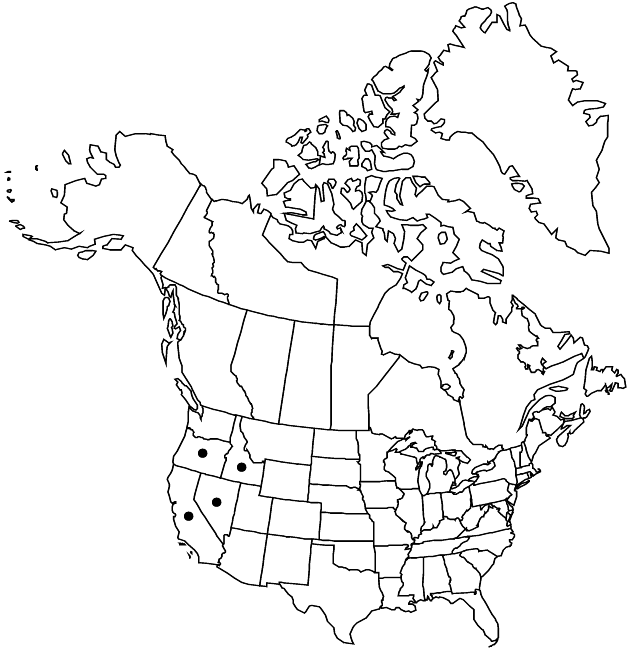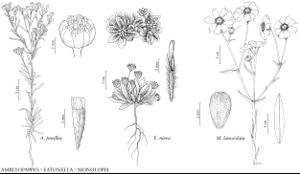Eatonella nivea
Proc. Amer. Acad. Arts 19: 19. 1883.
IllustratedEndemic
Basionym: Burrielia nivea D. C. Eaton in S. Watson, Botany (Fortieth Parallel), 174, plate 18, figs. 6–14. 1871
Treatment appears in FNA Volume 21. Treatment on page 349.
Stems usually crowded in tufts. Leaves 10–2(0–30) × 3–8(–12) mm. Peduncles 1–35+ mm. Involucres 4–6+ mm. Ray corollas inconspicuous, laminae ± erect, 2–2.5 mm. Disc corollas 1.5–3 mm. Cypselae black, 2.5–3.5 mm, hairs on margins 0.6–1.2 mm; pappus scales 1.5–2.5 mm. 2n = 38.
Phenology: Flowering spring.
Habitat: Sandy or gravelly soils, often with sagebrush scrub
Elevation: 800–3100 m
Distribution

Calif., Idaho, Nev., Oreg.
Discussion
Selected References
None.
Lower Taxa
None.
